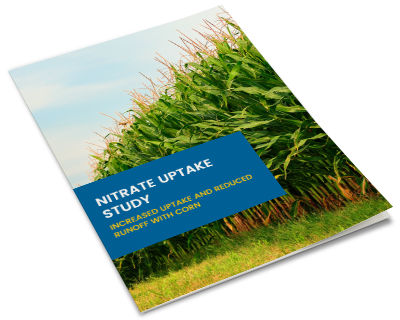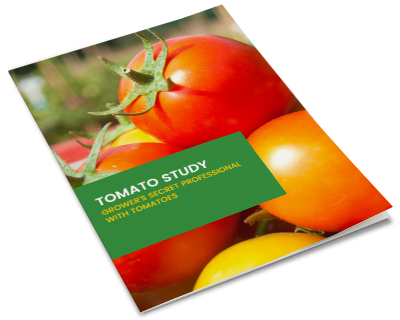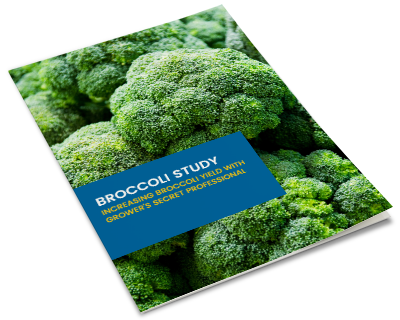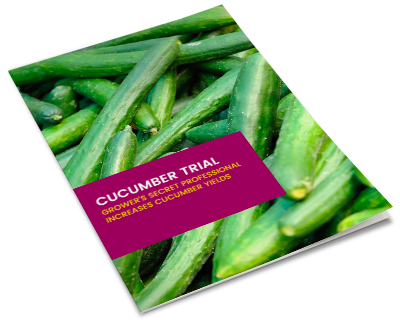|
Posted By: Wesley Chun, Ph.D. / |

By Dr. Wes Chun Ph.D.
Grower's Secret, Chief Science Officer
Applying fertilizers pre-plant and at-planting are beneficial practices to restore soil fertility and grow a successful crop. Pre-plant fertilizers are applied before planting seeds or seedlings into the field or into nursery potting media. At-planting fertilizers are applied during planting. These practices provide ready access to nutrients that are vital for seedling establishment and health. Proper fertilizer choice and placement are essential for maximizing the benefits of pre- and at- planting fertilizers
Both organic and synthetic fertilizers can be used for pre- and at- planting fertilization. However, there are advantages in using certain organic fertilizers.
- Organic fertilizers may introduce beneficial microorganisms. Some of the organisms found in compost and other organic materials are important for the mineralization of organic nitrogen. Other microorganisms may be able to break down soil and water contaminants, assist with sequestering nutrients for plants, or reduce the impact of pests and pathogens.
- Organic matter can improve soil structure by causing soil to clump and form aggregates. Aggregates enhance soil structure and its ability to take up and retain water.
- Organic matter serves as a reservoir of nutrients releasing significant amounts of nitrogen, phosphate, and sulfur.
- Organic matter may help reduce erosion by increasing the soil water holding capacity.
Synthetic fertilizers add nutrients to the soil or growing medium but do not have the additional benefits conveyed by organic fertilizers. In general, synthetic fertilizers:
- Do not contain micronutrients.
- Do not support microbial life in the soil.
- Do not add organic content to the soil.
- Can cause burns if misused or overapplied.
- Can release nutrients too quickly that can result in fertilizer loss through leaching or runoff, or creating excessive top growth before supportive roots can develop. Excessive early top growth can lead to disease-prone plants and less fruiting.
However, there are some disadvantages to organic fertilizers such as chicken litter, fish and other meals, and emulsions or hydrolysates. Depending on the feedstock source and manufacturing process, organic fertilizer composition can be variable, and the nutrient levels by weight are lower than synthetic fertilizers. In the past, this has been cost prohibitive for large scale operations. Additionally, the use of organic fertilizers can be messy (or smelly) and nutrient release can be variable since it depends on breakdown and mineralization by microorganisms.
Pre- and at- planting fertilizers can be placed in a field before planting, during planting, as a seed treatment, or in horticultural planting mixes. Placement of pre- and at- planting fertilizers depends on the type of fertilizer used. For example, it is more efficient to place slow release and immobile nutrients (ex. phosphorus) near the roots. Fast release, mobile fertilizers should be placed and worked into the soil to minimize runoff and leaching. Dry grain legume seed are often coated with a nutrient package to provide nutrients to the germinating seeds. Planting mixes such as potting soil have added nutrients. For example, Sunshine Mix Professional No. 4 has lime, gypsum, and seven mycorrhizal strains added to a base of Canadian sphagnum peat moss and perlite. Researcher have their preferred mixes such a classic 1:1:1 (compost:field soil:sand) mixed with five pounds of limestone per yard of the mix. Another example is the Cornell mix of equal parts sphagnum peat moss and perlite plus ten pounds bone meal, five pounds limestone, and five pounds blood meal per yard of the mix.
Selection of a pre-plant fertilizer is based on several criteria that include soil type, soil fertility, crop needs, climate history, and weather forecast information. Most synthetic fertilizers are quick release and are susceptible to runoff or leaching in sandy soils when high rainfall occurs. Cost can also be a decision-making factor. For example, one ton of chicken litter is recommended per acre prior to the start of the growing season for macadamia trees. However, organic fertilizers are better suited for pre-plant fertilization use since most are slow to moderate release and the addition of organic matter can help with soil structure and health. Growers can select the fertilizer based on the NPK values and the kind of release that best supports their crop. Below is a table that lists several organic fertilizers, their NPK values, and the rate of nutrient availability release. Nutrients of slow-release fertilizers are not immediately available to the plant and require mineralization to occur. Medium- and quick-release fertilizers do not depend heavily on microbial activity.
|
Organic |
Estimated NPK |
Release |
|
Alfalfa meal |
2.5 – 0.5 – 2.0 |
Medium fast |
|
Bat guano |
5.5 – 8.6 – 1.5 |
Medium |
|
Blood meal |
12.5 – 1.5 0 0.6 |
Slow |
|
Bone meal |
2-3 – 14-22 - 0 |
Slow |
|
Cottonseed meal |
7.0 – 2.5 – 1.5 |
Slow – medium |
|
Crab meal |
10.0 – 0.3 – 0.1 |
Slow |
|
Dried manure |
Variable |
Medium |
|
Feather meal |
15.0 – 0.0 – 0.0 |
Slow |
|
Fish meal |
10.0 – 5.0 – 0.0 |
Medium |
|
Greensand |
0.0 – 1.5 – 5.0 |
Very slow |
|
GSI Corn Steep Powder (GSI TM) |
7 – 6 – 4 |
Fast |
|
GSI Earth Emulsion 2-3-3 (GSI TM) |
2 – 3 - 3 |
Fast |
|
GSI Phosphorus Fertilizer + Ca (GSI TM) |
0 – 9 – 0 + 30 Ca |
Slow |
|
GSI Soluble Seaweed (GSI TM) |
0 – 0 - 16 |
Fast |
|
GSI 8-3-1 Granules (GSI TM) |
8 – 3 – 1 |
Medium - Fast |
|
GSI Nitrogen (GSI TM) |
16 – 0 – 0 |
Fast |
|
Kelp meal |
1.0 – 0.5 – 8.0 |
Slow |
|
Rock phosphate |
0.0 – 18.0 – 0.0 |
Very slow – slow |
|
Seabird guano |
12.3 – 11.0 – 2.5 |
Slow – medium |
|
Soybean meal |
6.5 – 1.5 – 2.4 |
Slow – medium |
|
Wood ash |
0.0 – 2.5 – 5.0 |
Fast |
|
Worm castings |
1.5 – 2.5 – 1.3 |
Medium |
The goal of pre-plant fertilization is to select a fertilizer and a placement method that will allow the nutrient to be available when the plant needs it while minimizing the risk of fertilizer loss from run-off, leaching, or volatilization. Pre- and at- planting fertilizers can enhance seedling growth and decrease their susceptibility to damage from pests and diseases. Methods of placement include:
- Broadcast – Fertilizer is applied uniformly to the soil surface and can be followed by incorporation into the soil. Tilling into the ground can reduce the risk of nitrogen volatilization of synthetic fertilizers.
- Banding – Fertilizer is applied in bands (strips) before planting/seeding, close to where the seeds or seedlings that are about to be placed. Advantages accrue for less mobile nutrients such as phosphorus. Banding can also be used at-planting either above or to the side of the seed row.
- In-Row – Fertilizer is applied when planting seed or transplants. Often, the fertilizer is placed one to two inches below and to the side of the seed row. Organic slow to medium release fertilizers may be best for this method. For example, GSI’s 8-3-1 granules are designed to release its nutrients over time.
Currently we do not know of any studies that directly compare organic and synthetic fertilizers used for pre-plant and at-planting fertilization. However, there are some studies that have suggested pre-plant application rates of organic fertilizers for crops. Most of the fertilizers in the table above work well pre-plant. There is a slight challenge in determining the amounts to use to match the nutrient requirements of your plant. The obvious choice is to use a slow- to medium- release fertilizer as a pre-plant fertilizer. In most instances, nitrogen will become a limiting factor and a fast release nitrogen can be applied as a foliar to meet the nitrogen needs of the growing seedling. Many of the newer amino acid fertilizers have addressed the problems of unpleasant odors, product variability, and cost per acre. They do not suffer from burn, leaching, and runoff issues of synthetic fertilizers. More importantly, the amino acids are taken into the plant rapidly and immediately used in protein synthesis. The amino acids in these fertilizers also serve as precursors to most of the growth hormones produced in plants. As always, we recommend consultation with a certified crop advisor, university extension agent, or give Grower’s Secret a call (888-467-4769) and ask for Chuck or Kim.
Happy Growing in 2020!






